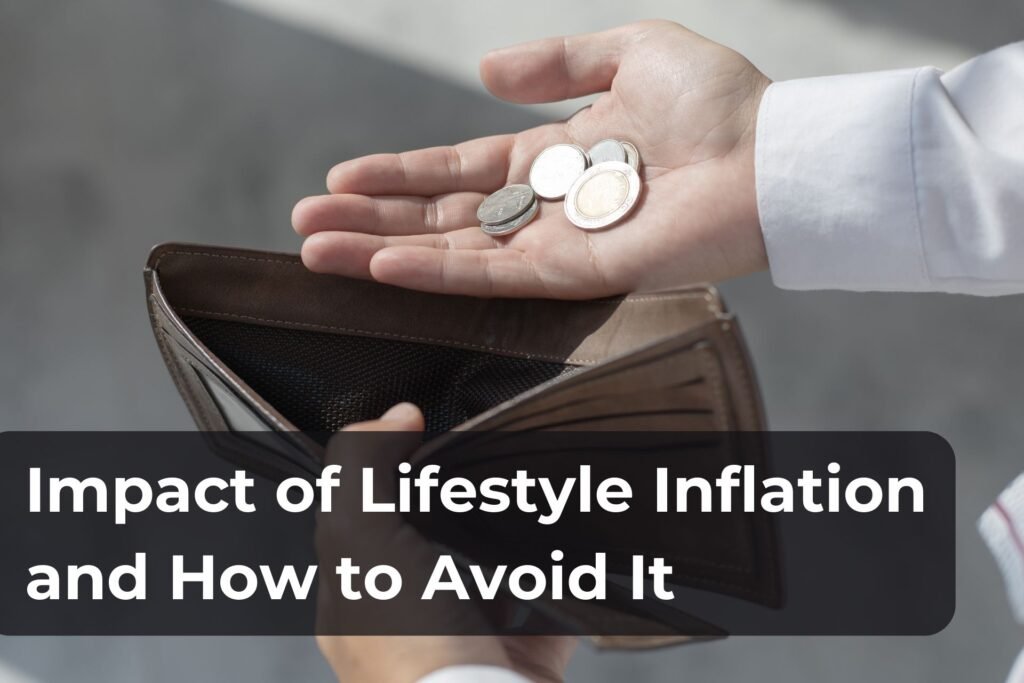What is Lifestyle Inflation?
Lifestyle inflation, the phenomenon where one’s spending increases as income rises, is a subtle yet potent force that can erode financial stability and impede long-term wealth accumulation. Often masked by the guise of improved living standards, it typically results in a parallel increase in discretionary spending, leaving little room for additional savings or investments. With consumer spending in urban areas witnessing an annual increase of around 8-10%, understanding the impact of lifestyle inflation and adopting strategies to mitigate it is crucial for maintaining financial health. This article delves into the mechanics of lifestyle inflation, backed by statistics and real-world examples, and outlines practical measures to counteract its effects.
Understanding Lifestyle Inflation
Lifestyle inflation occurs when individuals raise their standard of living in response to an increase in income. While upgrading one’s lifestyle isn’t inherently negative, unchecked lifestyle inflation can lead to financial strain, as savings rates stagnate or diminish despite higher earnings. For instance, a survey revealed that despite a 5% average annual salary increase among middle-income professionals, savings rates remained flat, indicating a proportional rise in expenditures.
The Impact of Lifestyle Inflation
Delayed Financial Goals:
Lifestyle inflation can divert funds away from critical financial objectives, such as retirement savings or debt repayment. For example, if a person’s expenditure grows by 5% annually, mirroring their salary increase, they may find their savings insufficient for retirement, necessitating extended working years.
Increased Financial Vulnerability: Higher spending can lead to reduced financial flexibility and increased vulnerability to economic downturns. During the recent economic slowdown, individuals accustomed to high expenditure levels found it challenging to adjust their spending, leading to higher debt levels.
Strategies to Combat Lifestyle Inflation
Establish Clear Financial Goals:
Setting specific, long-term financial objectives can help anchor your financial plan, making it easier to resist unnecessary spending. For instance, aiming to save ₹1 crore for retirement can motivate you to prioritize contributions to your retirement fund over upgrading to a luxury car.
Adopt a Budgeting Framework:
Implementing a budgeting system, such as the 50/30/20 rule—allocating 50% of income to needs, 30% to wants, and 20% to savings- can provide a structured approach to managing increased income without succumbing to lifestyle inflation.
Incremental Savings Strategy:
Commit to increasing your savings rate with every salary hike. If you receive a 7% salary increase, allocate at least half of that (3.5%) to your savings or investment accounts. This approach ensures that your savings grow alongside your income.
Mindful Spending:
Cultivate awareness around spending decisions. Before making a purchase, consider its impact on your financial goals and whether it offers lasting value. For example, opting for experiences that enrich your life rather than material goods that quickly depreciate can enhance your well-being without inflating your lifestyle.
Invest in Yourself:
Use additional income to invest in skills or education that can further increase your earning potential, rather than lifestyle upgrades. This can lead to more significant income increases in the future, compounding your ability to save and invest.
Lifestyle inflation represents a significant barrier to financial independence and wealth accumulation. By understanding its mechanisms and implementing strategies to mitigate its effects, individuals can enjoy sustainable improvements in their standard of living while securing their financial future. Remember, the key to combating lifestyle inflation lies in mindful spending, disciplined saving, and continuous investment in your financial literacy and earning capacity.
